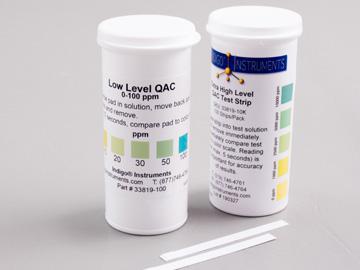[ad_1]
Aberdeen Loaves and Fishes Food Pantry found food hard to come by for the past six months.
A month ago, the pantry served 450 households, up from an average of serving 350 to 400 households a month. The nonprofit staved off big jumps in demand throughout much of the pandemic, but rising inflation has changed that.
“It stayed pretty steady all along, but now it’s beginning to build up,” said Lloyd Massey, executive director of Aberdeen Loaves and Fishes. “We’re anxious to say what kind of increase we see this month.”
Across the region, agencies and food distribution sites are experiencing similar strain. The St. Luke Food Pantry in Tupelo is having a difficult time in keeping enough food on hand to meet the needs of its growing clientele.
The Union County Good Samaritan had to decrease the amount of food it distributes per household.
And Mid-South Food Bank president and CEO Cathy Pope said calls from its pantries, some of which are seeing a 50% increase in need over the last couple of months, are constant.
“When all of those pantries are depending on food, they’re depending on the food bank to get them,” Pope said. “We’re constantly working on getting more food available.”
Community impact

St. Luke Food Pantry volunteer Cari Rowe fills another basket with food as they distribute food on June 24, 2022.
May brought a 40-year high with 8.6% inflation in the consumer price index, according to the Associated Press. Aberdeen Loaves and Fishes realizes that inflation is hitting families directly. Last month, the pantry gave out 19,080 meals.
“They just don’t have the money to go to the grocery store. They just need help. Everything’s got so expensive on them,” Massey said.
The nonprofit caters to more elderly people, since 57% of its clientele is 60 and over.
“That’s the ones that’s hurting now, the senior citizens,” Massey said.
The Union County Good Samaritan has observed a lot more people losing jobs, such as a recent layoff of approximately 280 workers at Southern Furniture Industries, located in neighboring Pontotoc County.
The organization serves some big families. While volunteers typically like to offer a bit extra for them, they sometimes cannot because there isn’t enough to give out, Roberson said. At a recent distribution, they aimed to give families about 55 pounds of food each. Before, it would have been closer to 65 to 70 pounds of food.
“It’s went down because we’ve not been able to get as many as we were, plus it costs,” Roberson said.
Over the last two months, the higher price of gas, food shortages and increasing food prices has led to a 30% increase in the amount of food Mid-South purchases to get out to the community through its pantries, partner agencies and mobile pantries. Transportation has stressed its budget, as costs have increased 35%.
Pre-existing challenges

Henry Rupert Jr. directs traffic as area residents make their way through the line at Thursday’s St. Luke Food Pantry distribution on Eason Blvd.
The Mid-South Food Bank in Memphis already saw an increase in need among the 31 counties it serves, which includes 12 in the Daily Journal’s coverage area. The pandemic presented a perfect storm for the food system, Pope said.
“We had disruptions to the food supply chain. We had a huge increase in need immediately, and we were dealing with all of those safety protocols,” Pope said.
The organization averaged 16.7 million pounds of food distributed across all its counties in the 12 months prior to the pandemic. At its height, it rose to 55 million pounds of food distributed. Currently, the organization is hovering at 36 million pounds of food distributed, more than double the amount prior to the pandemic.
Pre-pandemic, the St. Luke Food Pantry in Tupelo served an average of 1,200 households a month. Now, it serves 1,850 to 1,900 households each month, a more than 50% increase.
A lot more food is needed to meet the demand, but it’s a struggle with the supply chain slowdown and food shortage, said Jason Martin, executive director of the Hunger Coalition of Northeast Mississippi and the St. Luke Food Pantry.
“We’ve done it so far, and we’ve made it OK, but we are experiencing a shortage within the realm of meat, things like that, but we’re also struggling just for standard, canned vegetables,” Martin said.
Other agencies are struggling with items such as pasta, some fresh produce or proteins like peanut butter.
“It’s not as simple as going to the wholesaler and buying them because then you’re paying a higher cost,” Martin said.
Looking for food sources

Cora Murphree, 10, helps fill boxes of food at the St. Luke Food Pantry on Eason Blvd. in Tupelo.
While Aberdeen Loaves and Fishes receives food from the Mid-South Food Bank, it’s increasingly turned to retail stores to help fill some of the gaps. Volunteers have gone to other locations to pick up and buy food, such as Silver Dollar Sales in Golden.
For its part, Mid-South Food Bank is regularly seeking funding because the agency is purchasing more food than it had previously. On top of ordering large quantities of whatever products are available, the food bank also has to make multiple bids to account for timing, as some suppliers will take longer than others.
“That’s what we’re doing with our fundraising, to make sure we can pay those bills to get that food through the door and then disperse it to our partner agencies,” Pope said.
Its food sources and the amount contributed from each has changed since 2018 and 2019, Pope said. Retail donations have gone down as stores struggle with increasingly empty shelves. The food bank receives 45% of its food from the U.S. Department of Agriculture, an increase during the pandemic. A small percentage comes from food drives, Feeding America and national donors.
During the pandemic, it received approximately 40% of its products through the USDA Farmers to Families food box program and Tennessee Emergency Management Agency, temporary programs that have since ended.
Support needed locally, nationally

Marley Maharrey goes through the food line one more time as she volunteerss helping fill food orders at the St. Luke Food Pantry in Tupelo.
While the long term impact of food supply issues is yet to be known, Martin is certain relief is needed soon. The St. Luke Food Pantry distributes approximately 20,000 pounds of food a week, a level of need far beyond organizing individual food drives.
“The level of assistance we need is at the national level. It’s just not local. Everybody is struggling with having enough food to distribute to their clients,” Martin said.
It’s important for the community to support their local food pantries by getting involved, Pope said. The best way is to donate.
“When we all look at how many people are being served in 31 counties, and it’s 380,000 people that are being served that are struggling with hunger, everybody can play a part in it,” Pope said.
[ad_2]
Source link







